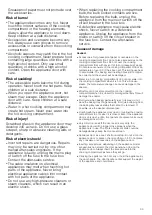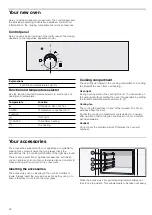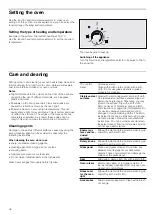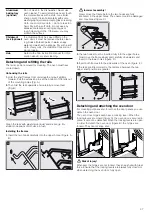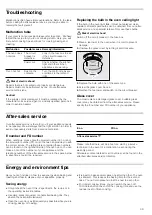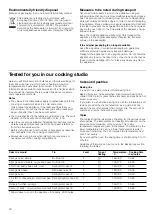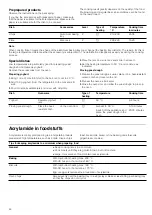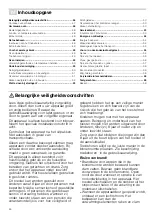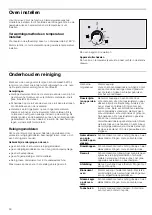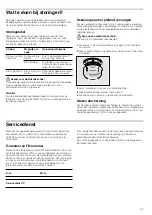
44
Preprepared products
Observe the instructions on the packaging.
If you line the accessories with greaseproof paper, make sure
that the paper is suitable for these temperatures. Make sure the
paper is a suitable size for the dish to be cooked.
The cooking result greatly depends on the quality of the food.
Pre-browning and irregularities can sometimes even be found
on the raw product.
Note
When cooking frozen meals, the shape of the aluminium baking tray may change (the baking tray distorts). The reason for this is
the large temperature differences that the accessory is subjected to. The deformation disappears as early as during the cooking
process.
Special dishes
Low temperatures are particularly good for preparing yeast
dough and home-made yoghurt.
Remove the accessories from the oven.
Preparing yoghurt
1.
Bring 1 litre of milk (3.5% fat) to the boil, let it cool to 40 °C.
2.
Add 150 g yoghurt (from the refrigerator) to the milk and stir
well.
3.
Pour into small sealable jars and cover with cling film.
4.
Place the jars on a wire rack and slide in at level 1.
5.
Set the baking temperature to 50 °C and continue as
indicated.
Proving yeast dough
1.
Prepare the yeast dough as usual, place it in a heat-resistant
ceramic dish and cover with a lid.
2.
Preheat the oven as indicated.
3.
Close the oven door and allow the yeast dough to prove in
the oven.
Acrylamide in foodstuffs
Acrylamide is mainly produced in grain and potato products
prepared at high temperatures, such as potato crisps, chips,
toast, bread rolls, bread or fine baked goods (biscuits,
gingerbread, cookies).
Dish
Accessories
Level
Type of
heating
Temperature,
°C
Cooking time
in minutes
Chips
Aluminium baking
tray
2
%
210-230
25-35
Pizza
Wire rack
2
%
200-220
15-20
Dish
Ovenware
Type of
heating
Temperature
Cooking time
Yoghurt
Sealable yoghurt
jars
1
%
50 °C
6-8 hours
Proving yeast dough
Place the heat-
resistant dish
on the oven floor
%
preheat to 50 °C
Switch off the appliance and
place the yeast dough in the
oven
5-10 minutes
20-30 minutes
Tips for keeping acrylamide to a minimum when preparing food
General
■
Keep cooking times to a minimum.
■
Cook meals until they are golden brown, but not too dark.
■
Large, thick pieces of food contain less acrylamide.
Baking
With top/bottom heating max. 200 °C.
With 3D hot air or hot air max.180 °C.
Biscuits
With top/bottom heating max. 190 °C.
With 3D hot air or hot air max. 170 °C.
Egg or egg yolk reduces the production of acrylamide.
Oven chips
Spread evenly over the baking tray, in a single layer. Bake at least 400 g per baking tray
so that the chips do not dry out
Summary of Contents for 5BC110.0
Page 2: ......




